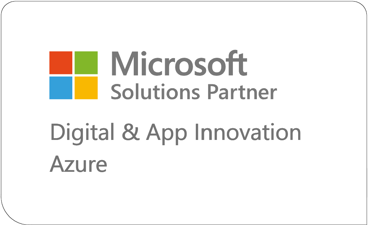The Complete Guide to User-Centred Design
Implementing UCD for your business or organisation has many benefits. UCD revolves around understanding the people who will use your product and designing it specifically for their needs.

It’s been months since you started to build the digital solution of your dreams. It made the team proud, made the stakeholders excited, and when launch day came, fanfare came with it, of course. But then you wake up from this dream, and reality hits unexpectedly. And hard.
Users struggle to use the UI, abandon tasks halfway through, and the support team is overwhelmed with queries of all kinds. Sound familiar?
This happens all the time because organisations and businesses build what “they” want rather than what “their users” want. That’s essentially what User-Centred Design (UCD) is, but is there more to it?
What User-Centred Design Really Means
Is it about making things look prettier or adding more features? Not exactly. UCD revolves around understanding the people who will use your product and designing it specifically for their needs, behaviours, and contexts.
To put it simply, UCD is all about bridging the gap between designers and users. There are things designers think would work, users have their own thoughts on what will work, and UCD sits in between those. Often, traditional designs approach it with the business’s needs and capabilities at the front. UCD, on the other hand, starts with how people behave and works backwards to a solution that feels intuitive for every user.
Users don’t care about the technical aspect of the design. They want something that simply accomplishes their goals in the first place, and fast. Designing with this mindset changes everything and ultimately leads to improved outcomes.
Granted, it’s not a perfect methodology as it needs continuous research, testing, and refinement to get things right. Instead of assuming how users behave, you gather evidence. In place of designing in isolation, get the users involved. And instead of launching blindly and hoping something sticks, validate it first before actually launching. And the list goes on.
How User-Centred Design Translates in the Real World
It all sounds good on paper, but how does UCD actually do in practice? Use the following as a guide:
-
Increased customer satisfaction and loyalty: People accomplish what they set out to do, and without hiccups. Smoother interactions lead to happier customers who become advocates, helping boost conversion rates naturally.
-
Improved development efficiency: Early and frequent validation means your team focus on features your intended users actually want. Lesser redesigns, minimised support, and an accelerated time-to-market for successful features follow.
-
Reduced project risk: Tests with actual users reveal issues when they’re still small and inexpensive to fix. You catch problems early on, and you’ll be on track with the quality you want to launch with.
-
Competitive differentiation: Focusing on preferences through UCD is a guaranteed win. It also compounds over time and helps build long-term trust.
-
Higher ROI: Catching usability issues early saves costs on rework and support. Add the revenue growth from increased loyalty and satisfaction, and UCD delivers a strong return on investment.
The Road to User-Centred Design
Implementing UCD for your business or organisation sounds wonderful, and the benefits are unbeatable. But how you get there is not what you might expect.
It’s structured but not linear. You’ll often cycle through stages multiple times as you learn and refine your understanding. Here’s a roadmap so you don’t get lost:
1. Research thoroughly: Start by understanding your users. Find out what they’re trying to accomplish and look at their motivations and frustrations. This research builds rich personas that guide every design decision.
2. Define clear problems: Pinpoint what users are struggling with and how you’ll solve it, but don’t jump to solutions. First, understand how users define success and where your current approach falls short.
3. Brainstorm and brainstorm: Generate as many ideas as possible. Explore multiple angles, sketch concepts, and prototype your rough drafts. Try not to stick with your first idea and explore different ideas.
4. Prototype and test early: Get your prototypes ready and let actual users interact with them. This is the time to watch your users interact with the design. Listen to them and understand what their struggle and frustrations are.
This testing phase will often tell you unique insights into the design, which will completely change your whole approach. And that’s exactly what should happen.
But this whole roadmap for UCD and the overview may still sound like all talk. How about a real application in real life?
The Sustainable Coastlines Case Study
Sustainable Coastlines had a fundamental problem: they needed a platform that would inspire New Zealanders to participate in beach conservation while also providing practical tools for organising cleanup events. This was the perfect opportunity to show how UCD really works in practice. Their goal wasn’t just to build a website but to change behaviour.
Like any UCD process, it all began with defining their users. In this case, it was environmentally conscious individuals who wanted to make a difference and also needed more accessible ways to get involved in the cause. Interviews and observations were most useful here as the team discovered potential volunteers. Their main concern was getting overwhelmed with how complex organising events really are, and they’re unsure how their small efforts contributed to the bigger picture.
That same concern shaped every design decision moving forward. The result was to build a website that will give the experience of making a real difference and achievable actions through conservation efforts. It will simplify event organisation, which was their initial concern, while also showing each user how their individual actions contributed to the whole picture of conservation efforts.
To put this idea into action, prototyping and testing went as planned, which revealed even more concerns that weren’t obvious before. Users wanted social proof of others participating, much clearer guidance on what to bring to events, and ways to track their own efforts over time. All of these became core features that made the platform stand out from the usual charity website.
Sustainable Coastlines proved that UCD works well. User engagement exceeded expectations, and event participation increased significantly because of the design decisions. On top of that, the platform also served as a model to be emulated by other conservation organisations. And of course, the solution achieved its real goal from the start of driving meaningful environmental actions by way of design that understood its users’ needs.
The Bottom Line
UCD is a transformative tool for every digital project, and there’s no doubt about that. It may look like a lot of work for the uninitiated, but once you dissect every part and phase, the only question you’ll ask is, “Why haven’t we done this sooner?”
Are you ready to create your story using the right set of data?
Let’s inspire action on the right audience.



